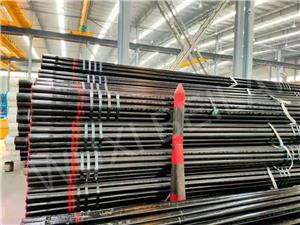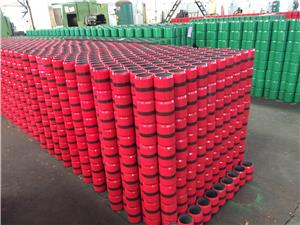Possible failure forms of seamless steel pipes
1. Corrosion failure
Corrosion is one of the most common failure forms of seamless steel pipe in the process of use. Because seamless steel pipes are often exposed to a variety of environmental conditions, such as acid, alkali, salt and other corrosive media, as well as wet, high temperature and other harsh environments, corrosion is easy to occur. Corrosion will cause the wall thickness of the seamless steel pipe to decrease, and even cause wall perforation in serious cases, resulting in leakage failure. In order to prevent the occurrence of corrosion failure, it is usually necessary to coat the surface of the steel pipe with anti-corrosion coating or coating treatment to improve its corrosion resistance.
2. Fatigue failure
Fatigue failure refers to the phenomenon of cracks and fractures of seamless steel pipes under the action of cyclic load. Because the seamless steel pipe often needs to withstand high strength cyclic load, especially under the action of alternating stress, the weak part of the steel pipe is prone to fatigue cracks, and with the passage of time, the cracks will gradually expand, and eventually lead to the fracture of the steel pipe. In order to reduce the risk of fatigue failure, it is necessary to strictly control the manufacturing quality of the steel pipe, improve its fatigue resistance, and avoid large stress concentration during use.
3. Overload failure
Overload failure refers to the failure form of seamless steel pipe when it is subjected to external force exceeding its carrying capacity. Overload failure is usually caused by mechanical damage, overpressure operation and other reasons. When the seamless steel pipe is subjected to excessive external force, its internal stress concentration will be large, resulting in deformation, fracture and other phenomena of the pipe. In order to prevent the occurrence of overload failure, it is necessary to carry out a reasonable assessment of the bearing capacity of the steel pipe, and avoid overpressure operation during use.
4. Wear and erosion failure
Wear and erosion are inevitable phenomena in the use of seamless steel pipes. Because seamless steel pipes often need to be in contact with various media, such as fluids, solid particles, etc., these media will cause wear and erosion on the surface of the steel pipe. With the passage of time, wear and erosion will cause the effective cross-sectional area of the steel pipe to decrease, the fluid flow resistance to increase, and even cause pipeline blockage or leakage failure in serious cases. In order to reduce the risk of wear and erosion failure, it is necessary to check and maintain the steel pipe regularly, replace the pipe segment with serious wear in time, and take effective protective measures, such as installing filters and protective coatings.
5. High temperature failure
High temperature failure refers to the failure form of seamless steel pipe when it is subjected to high temperature action during use. High temperature will cause the mechanical properties of the steel pipe to decline, while accelerating its corrosion and oxidation process. When the temperature exceeds the bearing limit of the steel pipe, its structure will be softened, deformed and other phenomena, and even cause creep fracture in serious cases. In order to prevent the occurrence of high temperature failure, it is necessary to reasonably control the working temperature of the steel pipe, and select high temperature resistant materials and processes to improve its heat resistance and service life.




